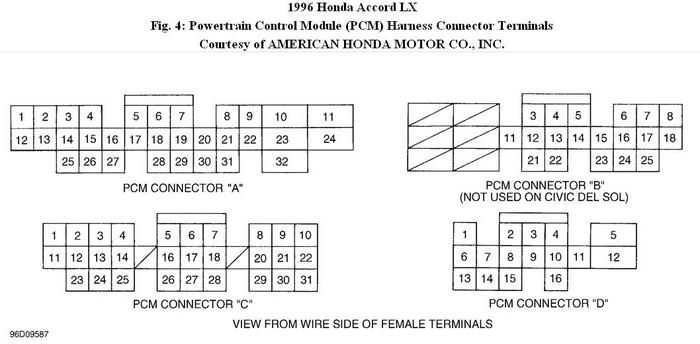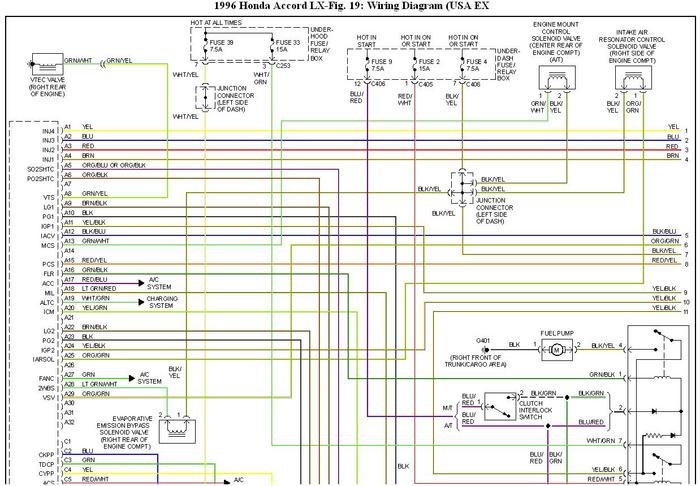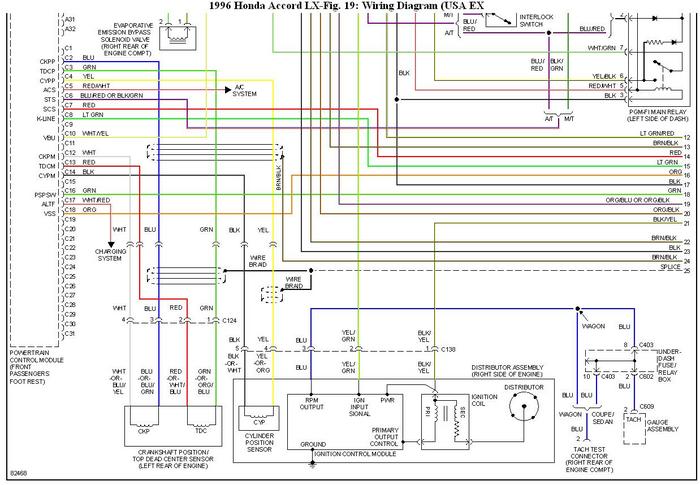Here are the diagnostic procedures. See if yo had missed out anything.
DTC P1491 - EGR SYSTEM
1. Perform PCM reset procedure. Connect SCS service connector. Start engine. Raise and hold engine speed at 3000 RPM with transmission in Park or Neutral, until radiator cooling fan comes on. Drive vehicle for approximately 10 minutes. Maintain engine speed at 1700-2500 RPM. If DTC P1491 is not indicated, system is okay at this time. Problem is intermittent. Check for poor connections or loose wires between EGR valve connector and PCM connectors.
2. If DTC P1491 is indicated, disconnect vacuum hose (No. 16) from EGR valve. Connect vacuum pump/gauge to hose. Start engine and let it idle. If vacuum does not exist, go to step 4). If vacuum exists, disconnect EGR solenoid valve 2-pin connector. Recheck hose (No. 16) for vacuum. If vacuum exists, check EGR system hose routing. If hose routing is okay, replace EGR control solenoid valve. If vacuum does not exist, turn ignition off. Disconnect PCM connector "A". See
Fig. 4 or Fig. 19.
3. Check for continuity between ground and EGR control solenoid harness connector Red wire. On all models, if there is continuity, repair short in Red wire between PCM and EGR control solenoid. If continuity does not exist, substitute a known-good PCM and recheck. If symptom or indication goes away, replace original PCM.
4. Connect vacuum pump/gauge to EGR valve. Engine idling, apply 8 in. Hg vacuum to EGR valve. If engine does not stall or run rough, or EGR valve does not hold vacuum, replace EGR valve. If engine stalls or runs rough, and EGR valve holds vacuum, turn ignition off. Disconnect EGR control solenoid connector. On all models, turn ignition on.
5. Measure voltage between ground and EGR control solenoid connector Black/Yellow wire. If battery voltage does not exist, repair open in appropriate wire between EGR control solenoid and power source.
6. If battery voltage exists, reconnect vacuum pump/gauge to vacuum hose (No. 16). Start engine and let it idle. Jumper positive battery terminal to left EGR control solenoid connector terminal. While observing vacuum gauge, connect right EGR control solenoid connector terminal to negative battery terminal.
7. If there is not approximately 8 in. Hg vacuum within one second, go to step 9). If there is approximately 8 in. Hg vacuum within one second, turn ignition off. Reconnect EGR control solenoid valve connector. Reconnect vacuum hose (No. 16) to EGR valve.
8. Start engine and let it idle. Jumper PCM terminal A7 to terminal A10. If engine does not run rough or stall, repair open in Red wire between PCM and EGR control solenoid. If engine runs rough or stalls, substitute a known-good PCM and recheck. If symptom or indication goes away, replace original PCM.
9. Turn ignition off. Inspect vacuum hoses for proper routing, leaks or restrictions. Repair hoses as necessary. If hoses are okay, disconnect lower hose on EGR control solenoid valve and connect a vacuum gauge to hose. Start engine and let it idle. If there is approximately 7.87 in. Hg vacuum, replace EGR control solenoid valve. If there is not approximately 7.87 in. Hg vacuum, repair vacuum hose between intake manifold and EGR vacuum control valve, or replace EGR vacuum control valve.
10. Turn ignition off. Inspect vacuum hoses for proper routing, leaks or restrictions. Repair hoses as necessary. If hoses are okay, replace EGR control solenoid valve.
11. Turn ignition off and disconnect EGR solenoid valve connector. Disconnect PCM connector "A". Check for continuity between PCM connector terminal A7 (Red wire) and EGR solenoid valve harness connector Red wire. If continuity does not exist, repair open in Red wire between PCM and EGR control solenoid valve harness connector. If continuity exists, check for continuity between ground and EGR control solenoid valve harness connector Red wire. If continuity exists, repair short to ground in Red wire. If continuity does not exist, check for continuity between ground and EGR control solenoid valve harness connector Black wire. If continuity does not exist, repair open in Black wire between ground and EGR control solenoid valve harness connector. If continuity exists, substitute a known-good PCM and recheck. If symptom or indication goes away, replace original PCM.
Images (Click to make bigger)
Sunday, January 2nd, 2011 AT 5:40 PM





